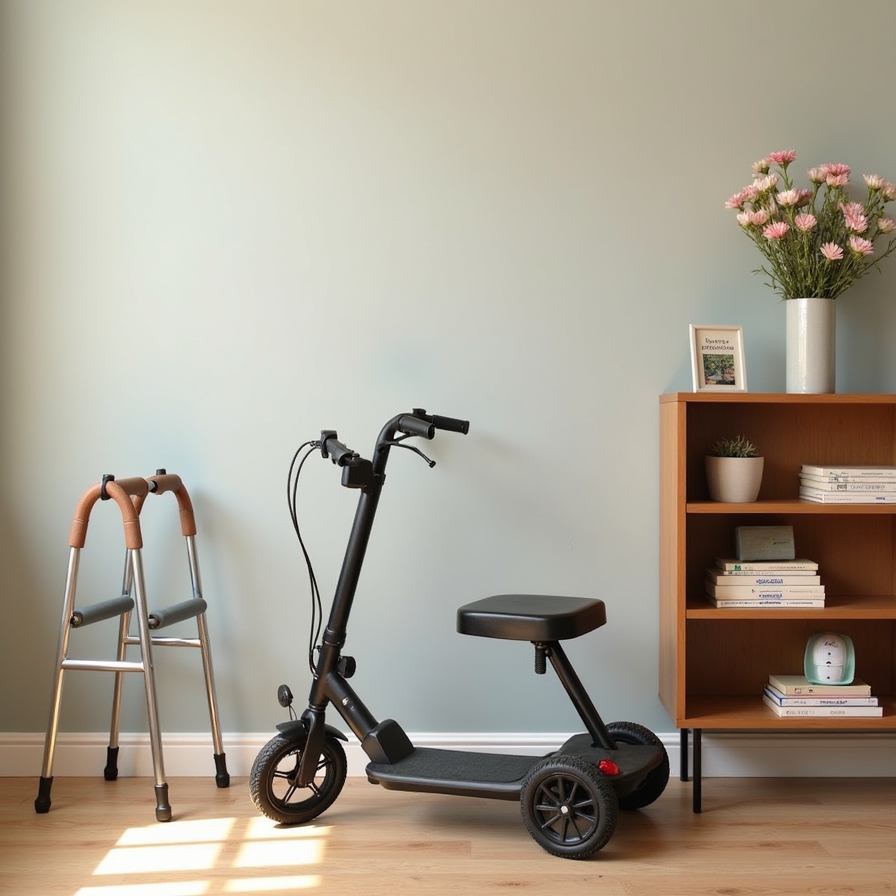Living independently and comfortably is a fundamental goal for people of all ages, especially for seniors, individuals with disabilities, and those recovering from injury or illness. Maintaining autonomy—being able to manage daily tasks without constant assistance—greatly enhances quality of life, self-esteem, and emotional wellbeing. Assistive devices play a crucial role in supporting this independence by bridging the gap between physical limitations and everyday demands.
In this article, we’ll explore how assistive devices promote comfortable and independent living products, the variety of products available, their benefits, and important considerations for choosing the right tools.
Understanding Autonomy and Comfort in Daily Living
Autonomous living means managing your own activities—whether that’s moving around the house, preparing meals, personal hygiene, or communication—without relying heavily on others. Comfort in this context refers not only to physical ease but also to emotional security and confidence.
Physical limitations can stem from aging, chronic illnesses like arthritis or Parkinson’s disease, temporary injuries, or congenital disabilities. These challenges may reduce mobility, strength, dexterity, or sensory perception, making routine tasks difficult or unsafe.
Assistive devices are designed to compensate for these difficulties by enhancing a person’s ability to perform daily functions. When well matched to an individual’s needs, these tools improve comfort by reducing strain and risk, while supporting autonomy by enabling greater self-sufficiency.
Categories of Assistive Devices for Comfortable Autonomous Living
Assistive devices come in many forms, each targeting specific needs and activities. Here are some key categories:
1. Mobility Aids
Mobility devices help individuals move safely and easily within and outside their homes.
- Canes and Walking Sticks: Provide balance support for those with minor mobility issues. Modern designs often include ergonomic handles and lightweight materials for comfort.
- Walkers and Rollators: Offer more stability and support than canes. Many models include wheels and folding frames for convenience.
- Wheelchairs and Scooters: For those with limited walking ability, these devices allow for greater independence in getting around.
- Stair Lifts and Ramps: Make multi-level homes accessible without the need for assistance.
2. Daily Living Aids
These tools assist with personal care and household tasks.
- Reachers and Grabbers: Help pick up objects without bending or stretching.
- Dressing Aids: Devices like button hooks and zipper pulls facilitate dressing.
- Adaptive Utensils: Designed for easier grip and control during eating.
- Shower Chairs and Handheld Shower Heads: Improve safety and comfort in bathing.
3. Sensory Aids
Assistive devices that compensate for vision, hearing, or cognitive impairments.
- Hearing Amplifiers and Alert Systems: Improve communication and environmental awareness.
- Magnifiers and Talking Clocks: Aid those with low vision.
- Medication Reminders: Help manage complex medication schedules.
4. Smart Home Technology
The integration of technology has created new opportunities for autonomy and comfort.
- Voice-Controlled Assistants: Devices like smart speakers enable control of lighting, temperature, and appliances.
- Automated Door Locks and Security Systems: Enhance safety without physical effort.
- Fall Detection Sensors and Emergency Alerts: Provide peace of mind for both users and caregivers.
How Assistive Devices Promote Comfort
Reducing Physical Strain and Fatigue
Many assistive devices are ergonomically designed to reduce the physical effort required for daily tasks. Lightweight mobility aids prevent unnecessary energy expenditure during walking, while tools like reachers minimize awkward bending or stretching that could cause pain.
Enhancing Safety and Reducing Injury Risk
Falls and injuries are major concerns for individuals with mobility or sensory impairments. Assistive devices such as grab bars in bathrooms, non-slip mats, and supportive seating reduce the likelihood of accidents, creating a safer living environment.
Providing Emotional Security
Knowing that a tool is available to aid in difficult tasks reduces anxiety and fear. For example, having a reliable walker can encourage users to venture outdoors confidently, improving mental health through social engagement and physical activity.
How Assistive Devices Support Autonomy
Enabling Independent Task Completion
Assistive devices allow individuals to perform tasks without asking for help, whether it’s cooking a meal, dressing, or using the restroom. This independence preserves dignity and fosters a sense of control over one’s life.
Extending Mobility Range
Devices like wheelchairs or powered scooters expand where individuals can go, from navigating their home to visiting friends or running errands. This freedom reduces isolation and dependency.
Facilitating Communication and Connection
For those with sensory impairments, assistive technologies ensure they can communicate effectively and stay connected with others, which is vital for emotional wellbeing and practical needs.
Real-Life Impact: Stories of Independence Through Assistive Devices
Consider Joan, a 75-year-old who struggled with arthritis, making walking and gripping utensils painful. After adopting a lightweight rolling walker and adaptive eating utensils, Joan found she could shop and prepare meals without assistance. Her increased independence led to a more active social life and improved mood.
Or Marcus, a veteran with limited hand mobility who uses voice-activated home technology. He controls his lights, thermostat, and even calls friends through voice commands, maintaining his independence despite physical challenges.
Choosing the Right Assistive Devices
Selecting the most appropriate devices depends on individual needs, lifestyle, and environment.
Consult Professionals
Occupational therapists, physical therapists, and healthcare providers can assess needs and recommend suitable products. Their expertise ensures safety and effectiveness.
Trial and Adaptation
Trying devices before purchase helps determine comfort and usability. Many suppliers offer rentals or trial periods.
Consider Lifestyle and Environment
An active person who travels may prefer portable, foldable devices. Someone living in a multilevel home might benefit from stair lifts or ramps.
Budget and Insurance Coverage
Some assistive devices can be costly, but many insurance plans, including Medicare and Medicaid, offer partial coverage. Research and planning help manage expenses.
Maintenance and Training
Proper care prolongs device lifespan and ensures safety. Users should clean, inspect, and maintain their aids regularly.
Training is equally important. Users must learn to operate devices correctly to maximize benefits and avoid injury. Many suppliers provide instructional materials or in-person training sessions.
The Future of Assistive Devices in Autonomous Living
Technological advancements are driving exciting innovations:
- Wearable Devices: Monitor health metrics and provide alerts in case of falls or medical emergencies.
- Robotics: Assist with lifting, transferring, or household chores.
- Artificial Intelligence: Offers personalized assistance and predictive support based on user habits.
These developments promise even greater autonomy and comfort, transforming how people live with physical challenges.
Conclusion
Assistive devices are vital tools that empower individuals to live comfortably and autonomously. By enhancing mobility, facilitating daily tasks, improving safety, and incorporating smart technology, these aids promote independence and improve quality of life.
Choosing the right assistive devices involves understanding personal needs, seeking professional advice, and considering lifestyle factors. With proper use and maintenance, these tools enable people to maintain dignity, confidence, and control over their lives, ultimately fostering healthier and happier living.


